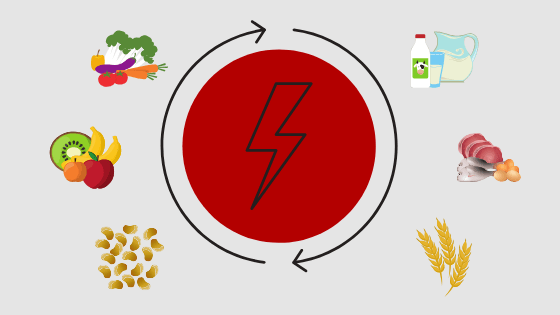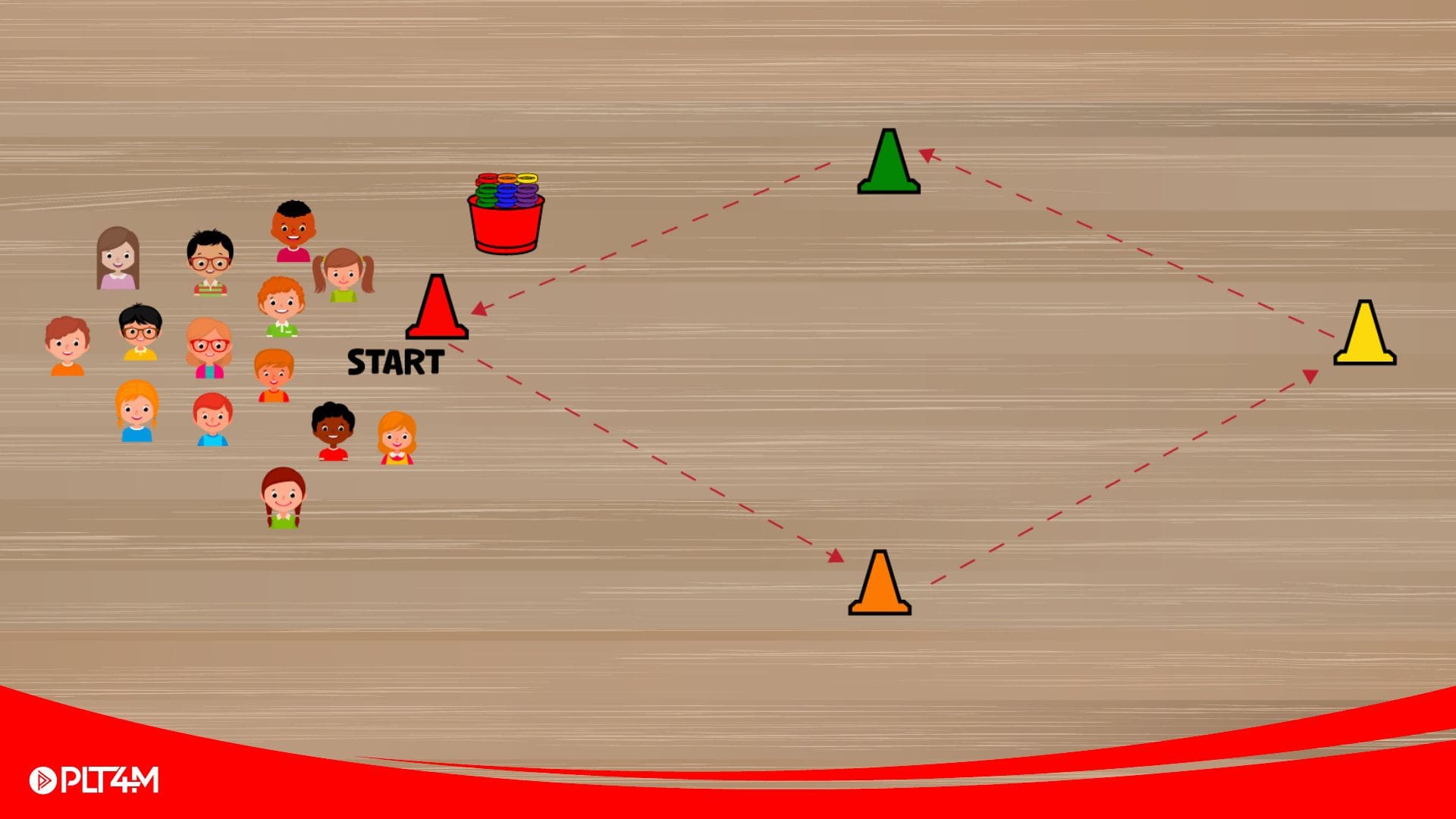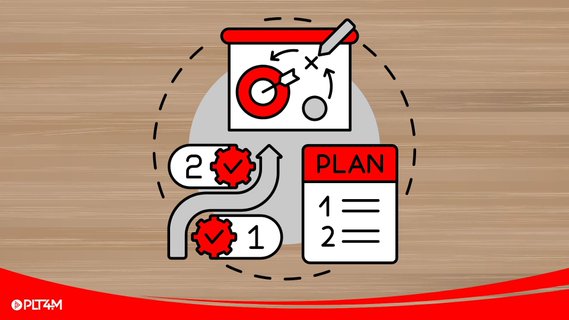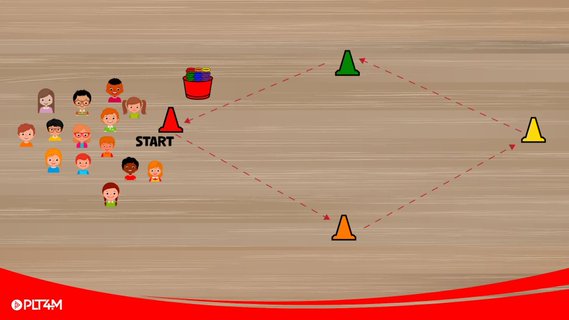Introduction To Types and Timing of Meals
In the first series, we did a deep dive into the science of food. We shifted away from food groups and “good” and “bad” food labels to understand what our bodies need, and how the chemistries within food serve us.
We started with macronutrients (aka “macros”) and learned that carbohydrates, proteins, and fats are the chemistries in food that give our bodies energy. We learned carbohydrates are in every plant-based food, from fruits, vegetables, and grains and are essential to provide the body with energy and nutrients. We explored protein and how it supports not only our muscles but also the immune system. Finally, we tackled fats and their essential roles to provide a dense source of energy and help the body create and transport hormones and nutrients.
There’s another class of nutrients called “micronutrients,” which include the vitamins and minerals found in foods. They are required in small amounts for development, disease prevention, and well-being. Micronutrients rarely occur alone in a given food – they often tag along with the macros. We haven’t dug into micronutrients just yet, but we mention them along the way.
If you haven’t explored the macros, be sure to check out the modules! Understanding the chemistry of food gives you the chance to understand the power of all food, and eat confidently in any circumstance. Next up, we’ll use the knowledge to figure out how to create meals and snacks with ease, anywhere you are.
Types of meals
In American culture, we label our meals as breakfast, lunch, and dinner/supper. Anything in between we call a snack. Breakfast occurs in the morning, lunch midday, and dinner/supper in the evening. But the labeling, timing, frequency, and foods served can vary between cultures based on things like traditions, foods available, and lifestyle. But beyond cultural expectations, there are zero requirements only to have certain foods at certain times.
The point is, a meal is not defined as a “type” of food, and neither is a snack!
– Meals tend to be larger to help hold you over for a more extended period of time.
– Snacks tend to be smaller and help you stay fueled for a shorter period of time.
Meals can be made of combinations of “snack foods,” and snacks can also be made from smaller portions of what’s served at a meal. What you eat as a meal does not have to be different than a snack. Both are just an instance of eating.
For the purpose of this lesson, we’ll continue to talk about the traditional mealtime labels. But know that there’s great flexibility in what to have and when, based on the purpose of the meal/snack, appetite level, and availability.
Intro To Nutrition EBook
This E-book comes fully loaded with written and video lessons covering calories, carbohydrates, proteins, and fats.
Timing of meals
In general, the human body operates best when it gets a refresh of fuel every 3-5 waking hours. Some people wake up starving (a great indication to eat). But others have little interest in food in the morning, and that’s ok. It’s not a requirement for health to eat immediately upon waking. But it is a good idea to eat something within 1-2 hours of waking.
This gives the body energy to move and be active. And it provides the brain with the much-needed fuel to concentrate and learn. Eating in the morning has also been shown to reduce irritability and improve mood. It’s a win-win all around. That’s why it’s typically the goal to give a body most of its energy during the day when you’re most active.
Once you consume your first food, it’s natural and normal to eat again within 3-5 hours. And then again 3-5 hours after that and so on for the rest of the day. Depending on what you eat or how active you are, you may even be hungry sooner than three hours, and that’s ok too. Additionally, class/lunch schedules and exercise can shift the pattern.
It’s rarely in anyone’s best interest to go longer than 5 hours without eating because it results in fatigue, irritability, increased appetite, changes in food preference, and difficulty with satiation (fullness). These are not “bad” consequences, and are the body’s natural response to missing out on fuel – it gets really hungry!
For most people, a typical meal pattern looks something like this:
– Wake 7 am
– Breakfast (7-8 am)
– Lunch (11 am-12 pm)
– Snack (3-4 pm)
– Meal (6-8 pm)
– Sleep 9-10 pm
Keep in mind your pattern may look different based on your appetite levels and schedule. Some people wake up early, which adds the need for a mid-morning snack. Others wake up late and stay up later, and as a result, they may roll right into lunch.
Additionally, it’s important to consider whether an activity might get in the way of eating in a rhythm. For example, perhaps at 3 pm, you have a music lesson, so eating isn’t possible. Then it’s essential to consider whether you can eat a bit sooner, or shortly after that, so you don’t go too long without eating.
If it’s tricky to get in larger instances of eating (aka a meal) every 3-5 hours, that’s where snacks or smaller instances of eating come into play. In the next modules, we’ll explore tips and tools to put together satisfying meals and snacks during different times of the day.
FAQ
Our health and diet culture spend a good deal of time debating the timing and frequency of when to eat. Here are a few questions that often come up when talking about when to eat.
Is it ok to skip breakfast if I wake up late?
It depends. If you sleep past the time you typically have breakfast, it depends how close in proximity you wake to your next meal. For example, if you usually have breakfast at 8 but wake up at 9, and lunch isn’t until 12, you should eat something! But if you wake up just an hour or two before lunch and aren’t very hungry, it’s perfectly acceptable to wait until lunch.
Most people have the same number of waking hours each day (typically sleeping ~9 hours and awake 15 hours). But the exact time people sleep or are awake can vary. Usually, when you wake up later, that means you’re staying up later and may need a meal/snack after dinner to support you before you go to sleep.
This is why it’s valuable to drop the meal labels – waking up late doesn’t mean you’re skipping breakfast – you’re just starting your day later and, as a result, may end up eating later in the evening.
What’s concerning is when someone is intentionally sleeping in as a tool to avoid eating. This can leave the body under-fueled, and has negative impacts on physical and emotional health.
Is eating late at night or after a certain time “bad” for health?
In general, it’s best to have your last instance of eating 1-2 hours before going to sleep. This allows people to sleep better. But whether it “hurts your health” is a more complicated question.
There’s some limited and conflicting research about whether eating “too late” at night means more of the nutrients we eat are stored as fat. The theory is that the hormones that help our bodies fall asleep aren’t turning the fuel we eat into readily available energy. Instead, the body may put more of that fuel into storage as body fat. But as we’ve discussed before, the body is continually putting fuel in and out of storage. That does not mean it’s unhealthy behavior.
Additionally, the body’s clock (aka circadian rhythm) is different from the clock on the wall. It’s impossible to say across the board what time is “too late.” It’s individual based upon your sleep-wake-activity rhythms.
Nighttime eating can be more problematic not because of fuel storage, but the behavior. For many people, eating at night is challenging for a variety of reasons. Often, people undereat during the day by either eating too little fuel or going too long without eating. Then by the time they get to the evening hours, they’re physically starving. And when we are excessively hungry, we tend to prefer larger portions of energy-dense foods.
Additionally, in the evening, we are often reviewing and dealing with (or avoiding) the stress of the day. And the foods we use to cope with stress and “reward” ourselves tend to be high energy and in larger portions, often while distracted with a movie/tv/social media, etc. “Fixing” this challenge isn’t as simple as “just don’t eat at night or after a certain time.” Instead, it’s best addressed by first making sure your body gets enough fuel during the day AND finding ways to manage stress.
So it’s less about the action of eating late at night and more about reason and the foods we feel compelled to eat when we’re stressed and really hungry. There is little reason to believe that eating later in the evening because you’re hungry and need fuel is harmful. Skipping dinner because you think it’s “too late” (especially because you had a late-night game/practice) is worse for your health because it makes it harder for the body to recover from exercise.
What’s up with intermittent fasting?
Intermittent fasting is an eating pattern that limits when people are allowed to eat and encourages people to go long periods without eating. Sometimes people are told to follow this pattern every day and other times just a few days a week. Many religions follow periods of fasting for spiritual reasons.
Research has mostly been done on animals and has shown that fasting may have some health benefits. There are a few very short-term human studies with modest improvements, but in many studies, many of the participants drop out…because it’s not a pleasant way to live for most people. Fasting is not studied or recommended for young growing bodies because it ultimately means you’re missing out on nutrients needed for growth.
Most people try intermittent fasting to lose weight, but there’s no evidence that it’s better than any other weight loss diet (none of which are shown to help people lose much weight, for long because again, trying to avoid food is a bummer). But one of the reasons people find intermittent fasting helpful is that it creates a “rule” around when they can and cannot eat. And that rule often eliminates the challenging evening period.
But the rule doesn’t get rid of the human tendency to seek food when stressed. And often, when people “break a food rule,” it leaves them feeling guilty and ashamed. And when people feel bad for what they eat, they often try to “make up for it” by eating less the next day. But as we’ve learned in our time exploring calories, undereating tends to increase hunger and stress. And by night people overeat…and the cycle continues.
Finally, even if there is some metabolic benefit to the approach, most people find intermittent fasting a difficult way to live – because it results in either choosing to miss out on eating with friends and family for special times OR to risk “breaking” the rule. Additionally, it’s a challenging approach for anyone who exercises/trains in the morning or evening. Food is required to give muscles energy to move and help repair after movement, and if a person is supposed to skip that fuel/recovery, it will likely limit athletic improvements.
There’s little evidence to show it might be helpful for some aspects of physical health, but there’s more evidence suggesting it’s not great for mental health.









